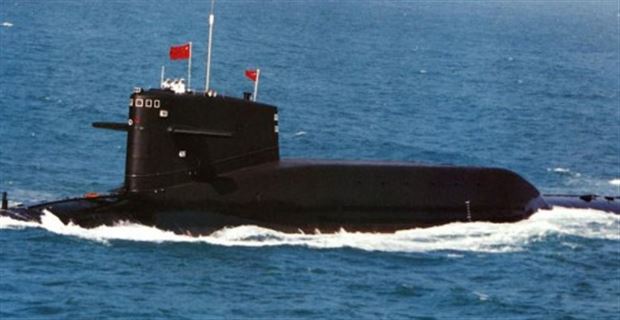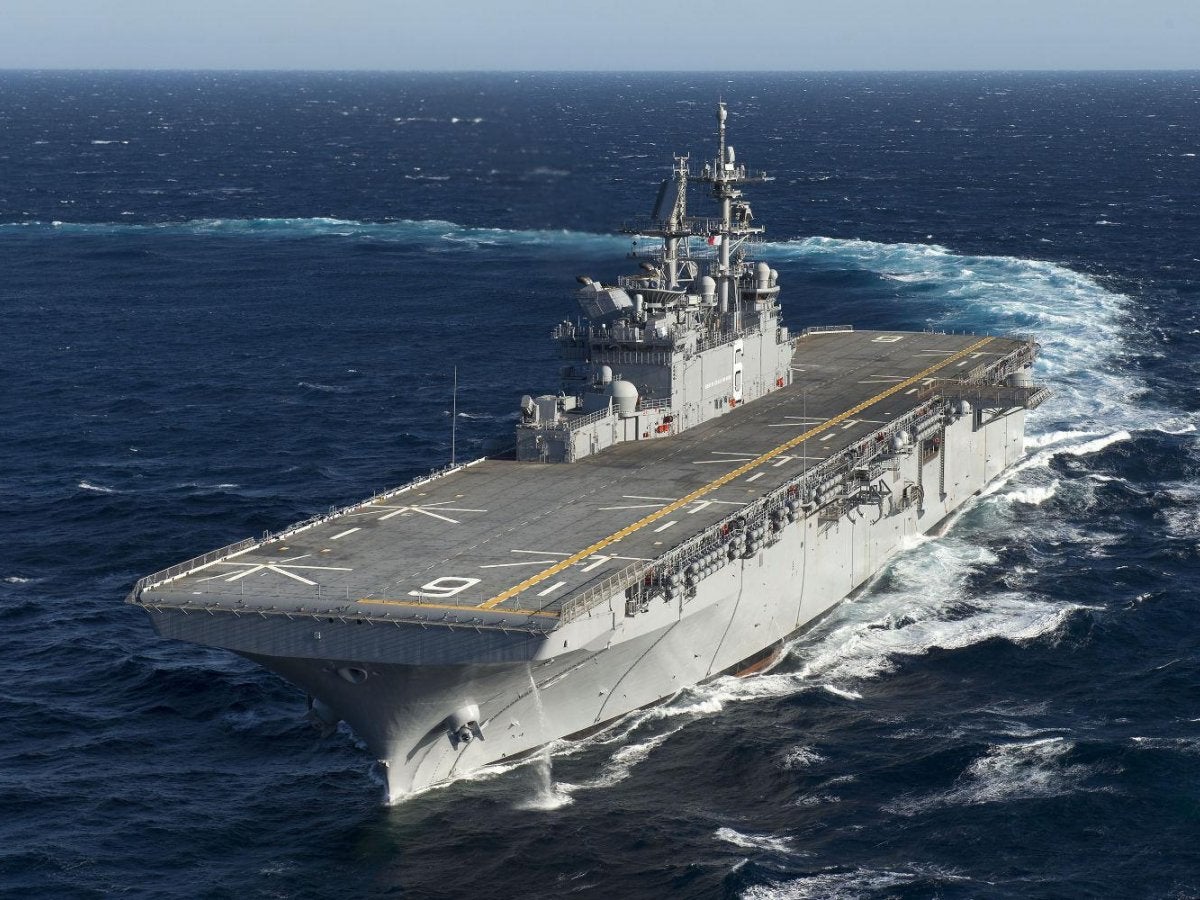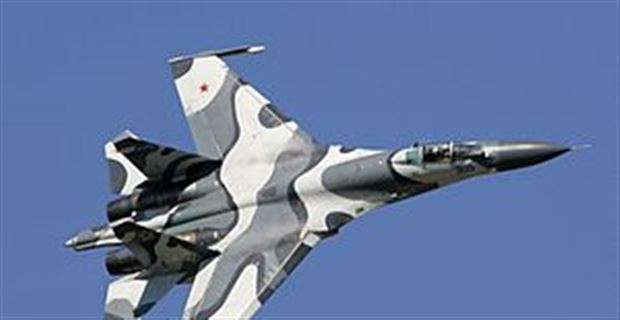By KRIS OSBORN

The
U.S.-China Economic and Security Review Commission is requesting expert proposals to provide a one-time unclassified report on China’s development of advanced weapons.
The Request for Proposals seeks unclassified, open-source assessments of specific Chinese weapons systems and areas of ongoing technological inquiry.
Some detailed priority areas include:
1. Maneuverable re-entry vehicles, including hypersonic glide and supersonic combustion ramjet engine-powered vehicles;
2. Directed energy weapons, to include high power radiofrequency weapons, high energy lasers, and particle beam weapons, with effects ranging from satellite jamming to target damage;
3. Electromagnetic railguns;
4. Direct-ascent, co-orbital, and other anti-satellite weapons in addition to counterspace electronic warfare capabilities; and
5. Unmanned and artificial intelligence-equipped weapons.
The RFP also places a premium on the need for reports which detail the implications of
China's advanced weaponry for the United States.
This includes an examination of potential U.S. countermeasures and areas of needed developmental emphasis, along with assessments of relative competitive advantages in key areas of weapons development.
Context: US-China Military Competition
The project seems unequivocally aimed at helping lawmakers and policy leaders better apprehend the fast-moving trajectory of China's military modernization and weapons development.
The request for a report comes amid a broader context of US concern about many areas of Chinese progress in developing next-generation weaponry.
Several examples among many include reports of China's testing of
hypersonic weapons, a development which could dramatically change the threat calculus for aircraft carriers and other US surface warships, among other things.
China is known to have conducted several hypersonic weapons tests.
The US Air Force Chief Scientist,
Geoffrey Zacharias, told
Scout Warrior that the US is indeed seeking to accelerate its hypersonic weapons development program, at least in part, to exceed or keep pace with Chinese progress.
Zacharias explained the US approach as consisting of "stair-steps" including a planned progression from hypersonic propulsion to hypersonic weapons, hypersonic drones and ultimately hypersonic recoverable drones or air vehicles; he said the US envisions having hypersonic weapons by the mid 2020s, hypersonic drones by the 2030s -- and recoverable hypersonic drones by the 2040s.
In addition, China's well-documented anti-satellite, or ASAT, weapons tests have inspired international attention and influenced the Pentagon and US Air Force to accelerate strategies for satellite protection such as improving sensor resiliency, cyber hardening command and control and building in redundancy to improve prospects for functionality in the event of attack.
China's drone programs, cyber intrusions and indigenous aircraft carrier construction are also several factors among many likely driving Congressional interest in this kind of report.
China's rapid development of new destroyers, amphibs, stealth fighters and long-range weapons is quickly increasing its ability to threaten the United States and massively expand expeditionary military operations around the globe, according to several reports from teh US-China Economic and Security Review Commission in recent years.
2016 US-China Economic and Security Review Commission
The 2016 US-China Economic and Security Review Commission specifies China's growing provocations and global expeditionary exercises along with its fast-increasing ability to project worldwide military power.
As examples, the report catalogues a number of aggressive Chinese military or maritime militia encounters:
- In May 2016, two PLA Air Force fighters conducted an unsafe intercept of a U.S. EP-3 aircraft, causing the EP-3 to dive away to avoid a collision.
- In 2013, a PLA Navy ship crossed the U.S. guided missile cruiser
Cowpens’ bow, causing the ship to alter course to avoid a collision.
- In 2009, the U.S. Navy ship
Impeccable was harassed by maritime militia boats in the South China Sea.
- In 2001, a PLA Navy fighter collided with a U.S. Navy EP-3 reconnaissance aircraft over the South China Sea.
Additional instances of Chinese provocation in recent year include placement of surface-to-air-missiles and fighters in sensitive areas of the South China Sea, along with its announcement of an "Air exclusion zone."
While the US military flew B-52 bombers through this declared zone in a demonstration of defiance, the move did demonstrate China's growing willingness to be aggressive.
In addition, Chinese "land reclamation" and territorial claims in the South China Sea prompted US "freedom of navigation exercises" to unambiguously thwart China's claims.

As part of a detailed effort to document China's growing influence as an expeditionary global power, the Congressional report highlights a range of Chinese deployments and worldwide exercises beyond their borders or more immediate regional influence.
From the report:
- 2012, China deployed its first UN peacekeeping combat forces to the UN Mission in South Sudan to provide security for PLA engineering and medical personnel.
- Indian Ocean far sea deployments: In early 2014, Chinese surface combatants carried out far sea training, during which they transited through the South China Sea, into the eastern Indian Ocean, and then sailed back to China through the Philippine Sea. During the 23-day deployment, the PLA Navy conducted training associated with antisubmarine warfare, air defense, electronic warfare, and expeditionary logistics.
- In addition to ongoing antipiracy operations in the Gulf of Aden, China dispatched an intelligence gathering ship to the Indian Ocean in 2012, and has deployed four classes of submarines (both nuclear and conventionally powered) to the Indian Ocean.
The 2016 report, coupled with the commissions detailed chapter on Chinese military modernization in a prior 2014 report, bring a sharpened focus upon the detail of Chinese ship, weapons and aircraft improvement and construction.
At the same time, despite these developments, the report does point out the China will need to sustain its current pace of military expansion for years to come in order to truly rival the US military's global reach.
"To support, sustain, and defend long range operations, the PLA must continue to develop or procure large amphibious ships, heavy lift aircraft, and logistical support capabilities, as well as continue to improve command and control capabilities," the report states.
Chinese Navy
While Chinese naval technology may still be substantially behind current U.S. platforms, the equation could change dramatically over the next several decades because the Chinese are reportedly working on a handful of high-tech next-generation ships, weapons and naval systems.
China has plans to grow its navy to 351 ships by 2020 as the Chinese continue to develop their military’s ability to strike global targets, according to the Congressional reports.
The 2014 U.S.-China Economic and Security Review Commission recommended to Congress that the U.S. Navy respond by building more ships and increase its presence in the Pacific region – a strategy the U.S. military has already started.
Opponents of this strategy point out that the U.S. has 11 aircraft carriers, the Chinese have one and China's one carrier still lacks an aircraft wing capable of operating off of a carrier deck.
However, the Chinese are already beginning construction on several of their own indigenous aircraft carriers. China currently has one carrier, the Ukranian-built
Liaoning.
Looking to the future, the 2016 report says "future Chinese carriers are likely to be flat deck ships, like U.S. aircraft carriers, that utilize steam or magnetic catapults and would enable the PLA Navy to employ aircraft armed with heavier munitions intended for maritime strike or land attack missions. According to DOD, China could build several aircraft carriers in the next 15 years. China may ultimately produce five ships—for
a total of six carriers—for the PLA Navy."
The commission also cites other platforms and weapons systems the Chinese are developing, which will likely change the strategic calculus regarding how U.S. carriers and surface ships might need to operate in the region.
These include the LUYANG III, a new class of Chinese destroyer slated to enter the fleet this year. These ships are being engineered with vertically-launched, long-range anti-ship cruise missiles, the commission said.
The new destroyer will carry an extended-range variant of the HHQ-9 surface-to-air missile, among other weapons, the report says.
As evidence of the impact of these destroyers, the report points out that these new multi-mission destroyers are likely to form the bulk of warship escorts for Chinese carriers -- in a manner similar to how the US Navy protects its carriers with destroyers in "carrier strike groups."
"These 8,000 ton destroyers (the LUYANG III) have phased-array radars and a long-range SAM [surface-to-air missile] system which provides the [navy] with its first credible area air-defense capability," the 2016 report states.
The Chinese are currently testing and developing a new, carrier-based fighter aircraft called the J-15.
Regarding amphibious assault ships, the Chinese are planning to add several more YUZHAO LPDs, amphibs which can carry 800 troops, four helicopters and up to 20 armored vehicles, the report said.
"The YUZHAO can carry up to four air cushion landing craft, four helicopters, armored vehicles, and troops for long-distance deployments, which DOD notes ‘‘provide[s] a . . . greater and more flexible capability for ‘far seas’ operations than the [PLA Navy’s] older landing ships.,’ according to the report.

The Chinese also have ambitious future plans for next-generation amphibious assault ships.
"China seeks to construct a class of amphibious assault ships larger than the YUZHAO class that would include a flight deck for conducting helicopter operations. China may produce four to six of these Type 081 ships with the capacity to transport 500 troops and configured for helicopter-based vertical assault," the report says.
Some observers have raised the question as to whether this new class of Chinese amphibs could rival the US Navy's emerging, high-tech America-Class amphibious assault ships.
The Chinese are also working on development of a new
Type 055 cruiser equipped with land-attack missiles, lasers and rail-gun weapons, according to the review.
China’s surface fleet is also bolstered by production of at least 60 smaller, fast-moving HOUBEI-glass guided missile patrol boats and ongoing deliveries of JIANGDAO light frigates armed with naval guns, torpedoes and anti-ship cruise missiles.
The commission also says Chinese modernization plans call for a sharp increase in attack submarines and nuclear-armed submarines or SSBNs.
Chinese SSBNs are now able to patrol with nuclear-armed JL-2 missiles able to strike targets more than 4,500 nautical miles.
The Chinese are currently working on a new, modernized SSBN platform as well as a long-range missile, the JL-3, the commission says.
While the commission says the exact amount of Chinese military spending is difficult to identify, China’s projected defense spending for 2014 is cited at $131 billion, approximately 12.2 percent greater than 2013.
This figure is about one sixth of what the U.S. spends annually.
The Chinese defense budget has increased by double digits since 1989, the commission states, resulting in annual defense spending doubling since 2008, according to the report.
Some members of Congress, including the former House Armed Services Committee's Seapower and Projection Forces Subcommittee Chairman Rep.
Randy Forbes, R-Va., advocated for both a larger U.S. Navy and a stronger U.S. posture toward China's behavior in the region.
Chinese Air Force
The U.S. Air Force’s technological air power superiority over China is rapidly diminishing in light of rapid Chinese modernization of fighter jets, missiles, air-to-air weapons, cargo planes and stealth aircraft, according to analysts, Pentagon officials and a Congressional review.
The 2014 U.S.-China Economic and Security Review Commission recommended that Congress appoint an outside panel of experts to assess the U.S.-Chinese military balance and make recommendations regarding U.S. military plans and budgets, among other things.Despite being released in 2014, the findings of the report -- if slightly dated -- offer a detailed and insightful window into Chinese Air Force technology, progress and development.
The Commission compiled its report based upon testimony, various reports and analytical assessments along with available open-source information.
An entire chapter is dedicated to Chinese military modernization.
The review states that the Chines People’s Liberation Army currently has approximately 2,200 operational aircraft, nearly 600 of which are considered modern.
“In the early 1990s, Beijing began a comprehensive modernization program to upgrade the PLA Air Force from a short-range, defensively oriented force with limited capabilities into a modern, multi-role force capable of projecting precision airpower beyond China’s borders, conducting air and missile defense and providing early warning,” the review writes.
Regarding stealth aircraft, the review mentions the recent flights of prototypes of the Chinese J-20 stealth fighter, calling the aircraft more advanced than any other air platform currently deployed in the Asia-Pacific region.
The Chinese are also testing a smaller stealth fighter variant called the J-31 although its intended use is unclear, according to the report.
In 2014, China displayed the Shenyang J-31 stealth fighter at China’s Zhuhai Air show, according to various reports.
However, several analysts have made the point that it is not at all clear if the platform comes close to rivaling the technological capability of the U.S. F-35.
Nevertheless, the U.S. technological advantage in weaponry, air and naval platforms is rapidly decreasing, according to the review.
To illustrate this point, the review cites comments from an analyst who compared U.S.-Chinese fighter jets to one another roughly twenty years ago versus a similar comparison today.

The analyst said that in 1995 a high-tech U.S. F-15, F-16 or F/A-18 would be vastly superior to a Chinese J-6 aircraft.
However today -- China’s J-10 and J-11 fighter jet aircraft would be roughly equivalent in capability to an upgraded U.S. F-15, the review states.
Alongside their J-10 and J-11 fighters, the Chinese also own Russian-built Su-27s and Su-30s and are on the verge of buying the new Su-35 from Russia, the review states.
“
The Su-35 is a versatile, highly capable aircraft that would offer significantly improved range and fuel capacity over China’s current fighters. The aircraft thus would strengthen China’s ability to conduct air superiority missions in the Taiwan Strait, East China Sea, and South China Sea as well as provide China with the opportunity to reverse engineer the fighter’s component parts, including its advanced radar and engines, for integration into China’s current and future indigenous fighters,” the review writes.
In addition to stealth technology, high-tech fighter aircraft and improved avionics, the Chinese have massively increased their ability with air-to-air missiles over the last 15-years, the review finds.
“All of China’s fighters in 2000, with the potential exception of a few modified Su-27s, were limited to within-visual-range missiles. China over the last 15 years also has acquired a number of sophisticated short and medium-range air-to-air missiles; precision-guided munitions including all-weather, satellite-guided bombs, anti-radiation missiles, and laser-guided bombs; and long-range, advanced air-launched land-attack cruise missiles and anti-ship cruise missiles,” the review says.

The review also points to the Y-20 aircraft, a new strategic airlifter now being tested by the Chinese which has three times the cargo-carrying capacity of the U.S. Air Force’s C-130.
Some of these new planes could be configured into tanker aircraft, allowing the Chinese to massively increase their reach and ability to project air power over longer distances.
At the moment, the Chinese do not have a sizeable or modern fleet of tankers, and many of their current aircraft are not engineered for aerial refueling, a scenario which limits their reach.
“Until the PLA Navy’s first carrier-based aviation wing becomes operational, China must use air refueling tankers to enable air operations at these distances from China. However, China’s current fleet of air refueling aircraft, which consists of only about 12 1950s-era H–6U tankers, is too small to support sustained, large-scale, long-distance air combat,” the review states.
The review also cites Russian media reports claiming that Russia has approved the sale of its new, next-generation S-400 surface-to-air-missile to China.
“Such a sale has been under negotiation since at least 2012. The S–400 would more than double the range of China’s air defenses from approximately 125 to 250 miles—enough to cover all of Taiwan, the Senkaku Islands, and parts of the South China Sea,” the review says.
The review also catalogues information related to China’s nuclear arsenal and long-range intercontinental ballistic missiles such as the existing DF-31 and DF-31A along with the now-in-development DF-41.
The Chinese are believed to already have a number of road-mobile ICBMs able to carry nuclear weapons.
The DF-41 is reported to have as many as 10 re-entry vehicles, analysts have said.




